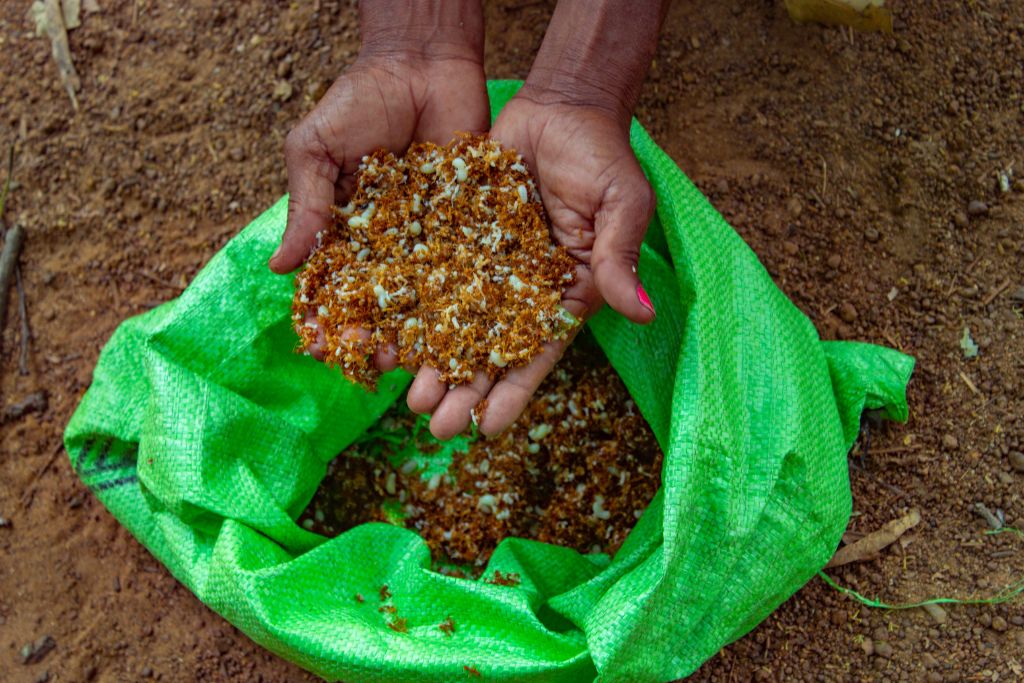Making red weaver ant chutney
Abhijit Mohanty
May 10, 2023
Mayurbhanj, Odisha
For years, red weaver ant has been an integral part of diet among the tribal communities in North Odisha’s Mayurbhanj district that has ensured their dietary diversity and food security. During lean season, when there is no standing crop for harvest, tribals often make a living out of selling it in the weekly market.
Locally known as ‘kai’, red weaver ant chutney is a delicacy among the Santal tribal community in Mayurbhanj district of Odisha. The villagers collect the ant colonies by cutting the branches of the mango tree where nests of the ants are perched. The villagers ensure not to collect the entire ant colony. Mature kai are usually left to rebuild their nest. Only the larvae and adolescent ants are collected.
Apart from household consumption, kai is also sold in local weekly markets as part of supplementing income. Cleaning kai requires meticulous effort. With a thin bamboo stick, objects like dried leaf, pebble, mud particles, etc are carefully removed. Traditionally, men take the responsibility to collect kai while women are involved in the recipe preparation. For preparing kai chutney, women often use handmade stone pair grinder. First, garlic, salt and mint leaves are ground. After that kai is mixed and thoroughly ground with the spices. Generally, kai chutney is eaten along with finger millet gruel as breakfast. And during lunch, kai chutney is also eaten with rice water known as pokhalo, a local delicacy in the region.
According to the tribal healers, kai is also used as herbal medicine to treat cold, flu, cough, arthritis, inflammation, anaemia, poor appetite, weak nervous system, ringworm infection and poor eyesight.
Abhijit Mohanty is a journalist based in Bhubaneswar






